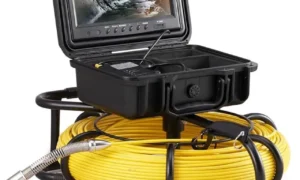Plumbing, a system of pipes, fixtures, and other apparatuses that facilitate the flow of water and waste, is an essential aspect of modern civilization. From providing clean drinking water to efficiently disposing of waste, plumbing plays a significant role in maintaining public health and hygiene. However, the history of plumbing is far from ordinary; it stretches back thousands of years to ancient civilizations that exhibited remarkable ingenuity in developing complex systems for water management. This article delves into the unusual history of plumbing, AC repairs, tracing its origins from ancient Rome to the innovative technologies employed in contemporary society. By exploring this fascinating timeline, we can gain a deeper appreciation for the evolution and importance of this fundamental aspect of human existence.
The importance of plumbing in daily life
Plumbing plays a crucial role in our daily lives, providing us with clean water for drinking, cooking, and bathing. Without plumbing systems, we would have to rely on alternative methods such as collecting rainwater or drawing water from wells, which are both time-consuming and less reliable. Additionally, efficient plumbing allows us to dispose of waste properly through sewer systems, maintaining hygiene and preventing the spread of diseases.
Throughout history, plumbing has evolved significantly. Ancient civilizations like the Romans were pioneers in developing complex plumbing systems that included aqueducts and intricate networks of pipes to bring water into their cities. These innovations not only improved sanitation but also allowed for the development of thriving communities. In modern times, plumbing technology continues to advance rapidly. Innovations such as water-saving fixtures and energy-efficient hot water heaters help us conserve resources while reducing utility bills. Moreover, advancements in materials and installation techniques have made plumbing more durable and efficient than ever before.
Medieval and Renaissance Plumbing: Advances in technology
During the Medieval and Renaissance periods, plumbing technology continued to evolve, albeit at a slower pace compared to ancient Rome. The advancements in plumbing during this time mainly focused on improving sanitation and hygiene within cities, castles, and estates. One notable development was the emergence of indoor toilets known as garderobes or privies, which were essentially small rooms with a hole in the ground that allowed waste to drop down into a cesspit or moat below.
Additionally, underground sewage systems began to be constructed in some cities. These systems consisted of stone or brick channels that transported wastewater away from populated areas. However, these early sewer systems were far from perfect and often faced challenges such as blockages and inadequate maintenance.
Industrial Revolution: The birth of modern plumbing
During the Industrial Revolution, significant advancements were made in the field of plumbing, leading to the birth of modern plumbing systems. Prior to this period, indoor plumbing was a luxury only accessible to the wealthy few. However, with the rise of industrialization and urbanization, there was an urgent need for improved sanitation and hygiene practices.
One notable innovation during this time was the development of cast iron pipes, which replaced fragile and easily clogged wooden pipes. These new pipes allowed for more efficient water distribution throughout cities and towns. Additionally, steam-powered pumps were introduced to provide a reliable water supply for both residential and commercial buildings. Furthermore, as cities grew larger and taller buildings were constructed, it became necessary to implement vertical plumbing systems. The creation of waste removal systems using gravity-fed drainage networks significantly improved sanitation conditions in densely populated areas. Overall, these advancements revolutionized public health standards by providing clean water access and effective waste disposal methods on a much larger scale than ever before. Air conditioner repair plays a crucial role in ensuring that our homes and workplaces remain cool and pleasant during the hottest months of the year.
Modern Plumbing: Smart technology and sustainable solutions
Modern plumbing has come a long way since its humble beginnings in ancient Rome. Today, smart technology is revolutionizing the way we think about and use plumbing systems. From smart toilets that can measure our health indicators to faucets that automatically adjust water temperature and flow, these innovations are making our lives more convenient and efficient.
Not only does smart technology enhance our daily routines, but it also promotes sustainability in plumbing systems. With features like water-saving modes and leak detection sensors, these smart devices help conserve water by minimizing wastage. Additionally, sustainable solutions such as greywater recycling systems allow us to reuse wastewater for non-potable purposes like irrigation or flushing toilets. This not only reduces our environmental footprint but also saves on water bills.
Conclusion: The evolution of plumbing throughout history.
In conclusion, the history of plumbing is a fascinating journey that highlights the ingenuity and resourcefulness of human beings throughout the ages. From the advanced sewer systems of ancient Rome to the advancements in sanitation during the Industrial Revolution, plumbing has played a crucial role in improving public health and enhancing our quality of life. Today, with modern innovations such as smart toilets and water-saving technologies, we continue to push the boundaries of what plumbing can achieve. As we reflect on this unusual history, let us appreciate the tremendous progress that has been made and strive towards further improvements in plumbing systems for a cleaner and healthier future.





























